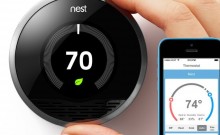Between working in offices, studying at school, exercising at the gym and relaxing at home, you are actually spending most of your time indoors. Do you know that in staying indoors, you might face more pollution than outside? Indoor air can contain viruses, dust mites, formaldehyde, radon, pet dander and volatile organic compounds (VOCs), pollutants that aggravate allergies. But in understanding four key indoor air quality components, you can ensure a healthy, sustainable home.
1. Moisture Control. Too much moisture can lead to mold, while dry air can cause skin and respiratory problems. Controlling humidity allows the HVAC system to work more efficiently, so homeowners pay less in energy bills. Choose automatic, whole-home humidifiers and dehumidifiers. For example, Aprilaire’s Model 1750 Central Dehumidifier’s built-in intelligence provides automatic control for not only whole-home dehumidification, but also for fresh air ventilation, air cycling and air filtration.
2. Ventilation. Without air circulation, allergens, odors, moisture and other pollutants cannot leave the home. Ensure indoor air flow with a mechanical ventilation system, which will use fans and ducts to circulate fresh air.
3. Air Filtration. Central air filters permanently remove airborne contaminants. In a recent standard industry test, the Aprilaire 5000 achieved 99 percent efficiency against airborne particles. The unit captures and kills virtually all contaminants, including viruses, bacteria, mold spores and allergens.
4. Energy Efficiency. According to the Environmental Protection Agency (EPA), using efficient heating and cooling systems, leakless ducts and thermostats that are programmed to save energy at night or when residents are away would prevent 169 billion pounds of greenhouse gas emissions a year. The EPA says that a programmable thermostat can save you up to 30 percent on your energy bills.






Leave a Comment